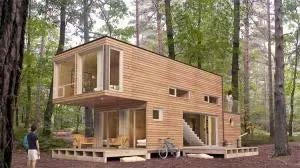Table of Contents
Permanent Tiny House Living: Foundation vs. Wheels
Imagine living your entire life in a space no larger than a studio apartment, yet having the whole world as your backyard. Tiny house living has surged in popularity, offering a minimalist lifestyle with a small footprint. Before adopting this compact way of life, a critical choice awaits: erect your tiny house built on a foundation or on wheels with boundless horizons.
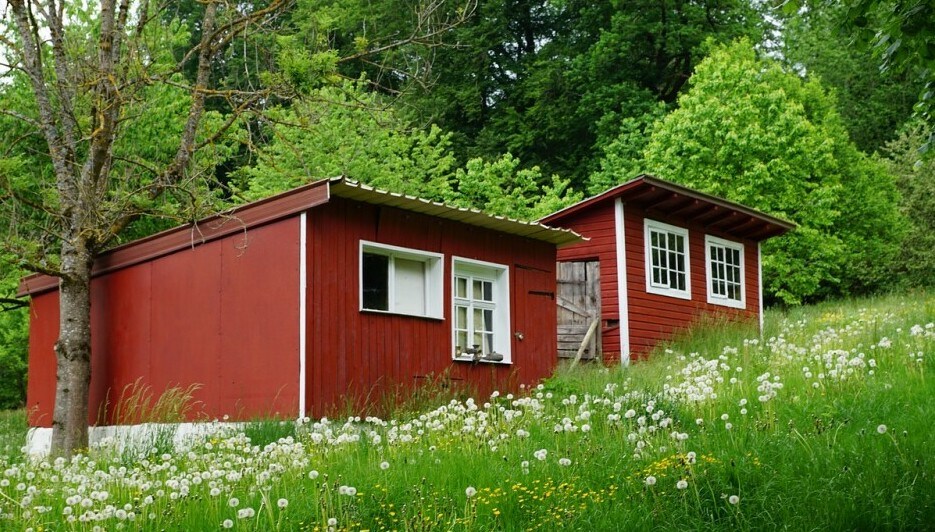 Tiny houses challenge the status quo of traditional housing, coming in various forms and requiring different foundations. Whether it’s a modern tiny house perched on a concrete slab, a cozy cabin on a permanent foundation, or a mobile abode anchored on a semi-permanent base, each carries unique pros and cons tailored to minimalist living needs. The right foundation not only supports your tiny house structurally but also reflects your lifestyle and priorities.
Tiny houses challenge the status quo of traditional housing, coming in various forms and requiring different foundations. Whether it’s a modern tiny house perched on a concrete slab, a cozy cabin on a permanent foundation, or a mobile abode anchored on a semi-permanent base, each carries unique pros and cons tailored to minimalist living needs. The right foundation not only supports your tiny house structurally but also reflects your lifestyle and priorities.
In this article, I’ll guide you through the advantages of opting for wheels, providing mobility and freedom unforeseen in standard homes, and delve into the essential considerations of a permanent foundation, such as local zoning laws and potential for property value growth. Understanding these factors will help you choose the most fitting foundation for your tiny home, be it a grounded residence or a home that lets you chase the sunrise.
Types of Foundations for Tiny Houses
When embarking on the journey of constructing a tiny house, choosing the right type of foundation is a pivotal decision. Among the various options are poured concrete slabs, slab-on-grade, and insulated concrete form (ICF) foundations. These cost-effective methods provide a sturdy base for your diminutive dwelling. The most budget-friendly choice is often a slab foundation, particularly slab-on-grade, which eliminates the need for costly basement walls.
For those who prefer mobility in their tiny house, skids or runners act as a semi-permanent foundation. While offering the advantage of easy relocation, this method may have durability limitations. On the other hand, pier or tube foundations consist of strategically placed footings that can accommodate sloped lots and support hands-on builders looking for DIY solutions. Lastly, rubble trench foundations marry structural integrity with drainage capability, serving best in areas with soil that has a high bearing capacity, although they are not recommended for hilly terrain.
Concrete Slabs
Concrete slab foundations are widely favored in the tiny house community due to the straightforward nature of their construction. Even beginners can tackle this method by erecting a wooden frame and pouring concrete to form a robust slab, typically 4 to 6 inches thick. While this thickness usually suffices, reinforcement with rebar or wire mesh provides additional stability.
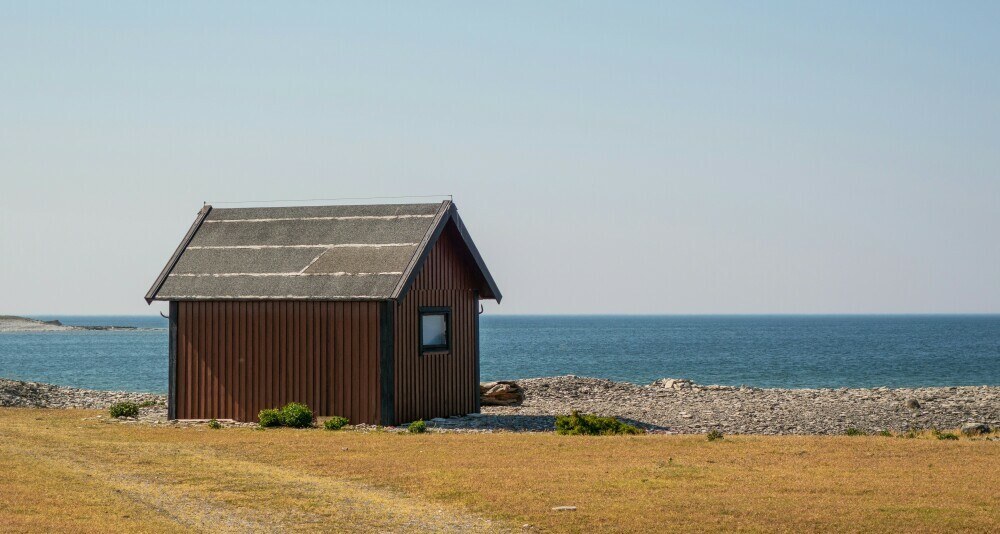 Cost-effectiveness is a hallmark of slab foundations, and they suit a variety of tiny house aesthetics, from rustic barn-like cabins to simple traditional styles. Their practicality shines in coastal areas where basement construction is impeded by high water tables, making them an ideal choice for tiny houses in such environments.
Cost-effectiveness is a hallmark of slab foundations, and they suit a variety of tiny house aesthetics, from rustic barn-like cabins to simple traditional styles. Their practicality shines in coastal areas where basement construction is impeded by high water tables, making them an ideal choice for tiny houses in such environments.
Permanent Foundations
Choosing a permanent foundation for a tiny house opens the door to conventional home amenities, such as traditional utility hookups, differentiating it vastly from the limitations of tiny houses on wheels. A residence on a permanent foundation is more likely to receive residential zoning approval and provides enhanced durability, thus increasing the home’s ability to endure natural disasters.
Building codes and zoning laws are critical when considering a permanent foundation, as they dictate the parameters for legally situating a tiny house. These homes afford more creative freedom in design, offering potential for adding basements or crawl spaces, a luxury not afforded to their wheeled counterparts.
Semi-Permanent Foundations
For some, a semi-permanent foundation strikes the perfect balance between stability and portability. Skids or runners, made from heavy-duty timber or steel, are an economical foundation variant. While they simplify the task of moving a house, they may not always meet building code requirements and could be subject to wear over time.
Attaching a wheel kit to skids significantly reduces foundation costs while still providing a semi-permanent solution that can be relocated. A tiny house on skids or runners offers a modular setup, easily adjusted or moved, offering a degree of versatility other foundation options do not.
Pros and Cons of Different Foundation Types for Tiny Island Houses
For the freedom-seeking individuals, tiny houses on wheels are the epitome of mobility, allowing for effortless transportation and presenting fewer hurdles in acquisition and resale scenarios. Conversely, houses on fixed foundations offer cost savings over time, less upkeep, and the likelihood of home value appreciation.
The safety and security of a tiny house on a foundation are superior, providing a shelter capable of withstanding severe weather and other natural adversities. These sturdy bases enable larger builds with diverse shapes and the benefits of accessible under-house utilities, admirable insulation, and additional storage areas like basements. However, despite their advantages, building a tiny home on a foundation introduces new expenses, compliance with regulatory standards, and forfeits the ease of mobility, yet stands as a legally solid housing solution with scalability for future modifications.
Advantages of Having a Tiny House on Wheels
Tiny houses on wheels epitomize the quintessence of flexibility and freedom in housing. Unlike their counterparts anchored to foundations, these diminutive dwellings offer the ability to change scenery or follow employment opportunities without the burden of selling a home or ending a lease. Moreover, this type of tiny house typically skirts some stringent building codes, thanks to its classification as a vehicle rather than a permanent structure, potentially simplifying the initial construction process.
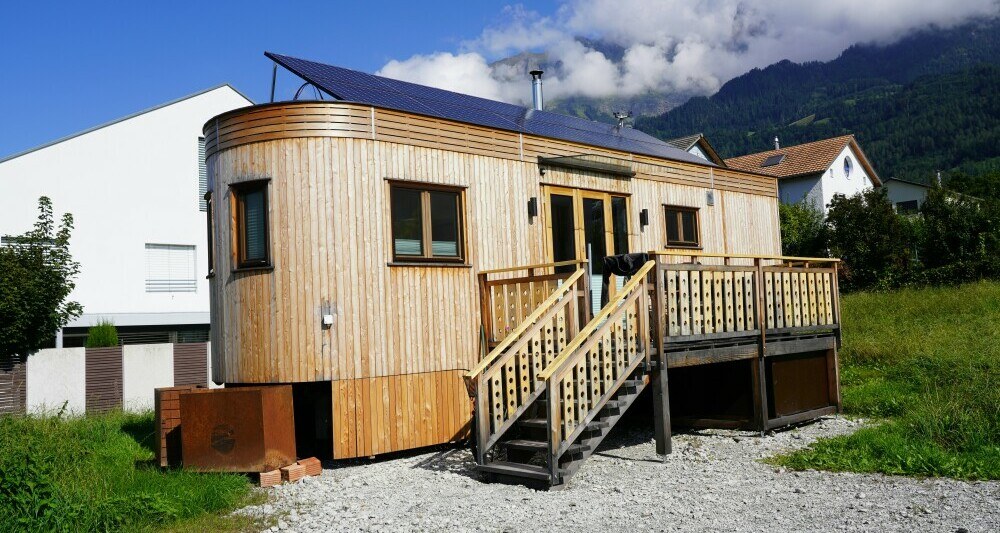 A key difference in the cost hierarchy is that tiny houses on wheels tend to have higher total ownership costs when compared to those on foundations, primarily due to the maintenance of the trailer and wheels. However, homes on wheels may be safer as they allow homeowners to easily dodge severe weather by relocating the house. Meanwhile, securing financing for a tiny home on a foundation can be akin to traditional home loans, presenting less of a financial hurdle to interested parties in pursuit of a solid, stationary tiny house.
A key difference in the cost hierarchy is that tiny houses on wheels tend to have higher total ownership costs when compared to those on foundations, primarily due to the maintenance of the trailer and wheels. However, homes on wheels may be safer as they allow homeowners to easily dodge severe weather by relocating the house. Meanwhile, securing financing for a tiny home on a foundation can be akin to traditional home loans, presenting less of a financial hurdle to interested parties in pursuit of a solid, stationary tiny house.
Mobility and Flexibility
Tiny homes on wheels celebrate mobility and the ability to uproot and replant wherever desired, tangibly enhancing the lifestyle of those with wanderlust. While the immovable character of a home on a foundation may be a detractor for some, the ability to move ones’ home at will stands out as one of the most appealing characteristics of homes on wheels. Such particular suitability for shifting locales means that not only is the physical space of living adaptable, but the social and cultural environment is as well.
The financial landscape of these mobile homes is also promising, as data indicates that homes under 1,200 square feet have seen a significant appreciation, which could imply a potential for equity building in tiny homes on foundations over time. Ultimately, the chosen type of foundation influences everyday life, from legal conformity to convenience, making it a crucial part of the decision-making process for potential tiny house dwellers.
Ability to Explore Different Locations
For the nomads and the restless spirits, the allure of a tiny house on wheels lies in its capacity to roam. Owners can transverse various landscapes and communities, enjoying the freedom to reside in new places with relative ease. The practicality extends to placing these homes in accommodating RV parks, which often provide essential utility hookups.
Moreover, the mobility of a house on wheels can be lifesaving in the face of natural disasters—owners have the opportunity to evacuate to safer grounds with their home in tow. This functionality grants owners peace of mind, knowing they can remove themselves from harm’s way during extreme events like floods, hurricanes, or fires.
Easy Setup and Relocation
Relocation with a tiny house on wheels is a simplified affair; by disconnecting the usual home amenities and fastening down the home’s contents, the house is ready to hit the road. Nevertheless, this convenience may come with a requirement for special travel permits due to the house’s dimensions.
Bypassing many local building codes, the portable nature of a tiny house on wheels eliminates certain regulatory compliance issues faced by fixed homes, offering a less bureaucratically encumbered residential option. The ease of setting up and moving a tiny house on wheels makes it an attractive choice for those who crave a flexible living arrangement.
Receiving the Benefits of a Traditional Home on Wheels
Choosing a tiny house on wheels does not mean sacrificing the stability and familiarity of a traditional home; it simply means adding wheels to the equation. Adventure seekers can satiate their wanderlust by touring new destinations without relinquishing the comforts of home since these structures offer many of the amenities found in stationary houses.
The intrinsic value of a tiny house on wheels is further underscored in times of crisis; the option to swiftly relocate away from natural disaster zones grants owners a sense of security. Additionally, many mobile tiny homes find a welcome spot in RV parks, where they can connect to utility services. Having the liberty to easily escape unwelcome environmental conditions or change one’s surroundings is an indelible advantage for those embracing the tiny house movement on wheels.
Considerations for Permanent Foundations
When contemplating a tiny house built on a permanent foundation, one must weigh the benefits and obligations that accompany this endeavor. Unlike mobile counterparts, houses on foundations often afford greater design flexibility and access to traditional utility hookups. They provide the added benefit of potentially receiving residential approval, which may not always be as straightforward for tiny houses on wheels. Additionally, a permanent land presence tends to offer better resilience to natural disasters, as the house is anchored to a firm structure.
However, opting for a permanent foundation means you must navigate local zoning regulations, which could impose additional costs related to building permits, utility connections, and compliance with specific codes. Questions to consider include the type of foundation—such as slab, pier-and-beam, or basement—that best suits your house project, the average cost for each foundation option, and the suitability of each for a do-it-yourself approach or the necessity of a professional house builder. Each foundation type provides its unique advantages and influences the overall feasibility and longevity of your tiny house.
Zoning Codes and Regulations
Navigating the maze of zoning codes and regulations is essential for the legality and proper placement of your tiny house. These codes determine permissible house locations and may impose restrictions based on size, layout, and the manner in which they affect the surrounding neighborhood. While a house on wheels might encounter legal barriers due to its RV classification—including strict parking and permit requirements—those on permanent foundations are generally subjected to more straightforward residential statutes.
However, variations in zoning ordinances can still present challenges; the specific requirements often vary by jurisdiction and can sometimes leave tiny house owners in a confusing grey area of enforcement. Successful adherence to these codes involves meticulous consideration of square footage limitations, allowable lot sizes, and potential requirements for auxiliary dwelling units. It’s important to understand the distinctive zoning laws in your desired area, as compliance is a non-negotiable aspect of your tiny house project.
Average Cost and Budgeting for a Permanent Foundation
Budgeting for a permanent foundation necessitates a keen understanding of both the costs involved and the variable nature of the expenses depending on your chosen foundation type. A Monolithic Slab Foundation, for instance, can cost an average of $5 to $7 per square foot nationwide, amounting to roughly $10,000. The more complex Stem Wall Slab Foundation averages around $12,000—figures that underscore the need for a well-planned budget.
In regions that mandate compliance with rigorous zoning regulations, expect to face added costs for building permits, averaging about $1,200, and significant utility connection fees, occasionally exceeding $11,000. While a simple slab foundation for a tiny house might only set you back between $1,000 and $2,000, these additional requirements highlight the importance of budgeting for ancillary costs beyond the foundational structure itself.
Design Flexibility and Floor Plan Options
One of the most significant benefits of anchoring your tiny house to a permanent foundation is the design versatility that unfolds. Without the constraints imposed by the need for mobility, as with houses on wheels, choosing a foundation grants you broader freedoms over the home’s dimensions, infrastructure layout, and overall aesthetic. Homes on foundations aren’t bound by road-legal size limitations, allowing for greater creativity and innovation in the floor plan design.
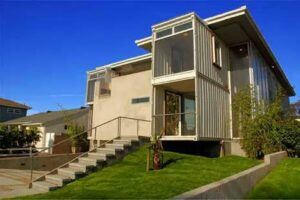
Floor plans can be custom-tailored to include several architectural features, like basements or crawlspaces, and can adapt to the unique topography of the land, such as sloped lots. With a stationary tiny house, you have the leeway to expand or modify your living space in the future, thus enabling you to truly personalize your tiny home to match your evolving lifestyle and preferences.
Access to Traditional Utility Hookups
A prime advantage of choosing to build your tiny house on a solid, immovable foundation is the ease of access to traditional utility services. This platform supports integration into the city grid, affording reliable connections to plumbing, electricity, and even local WiFi services. The stable nature of a permanent foundation negates the necessity to invest in alternative systems like solar power or compost toilets, commonly associated with homes on wheels.
While alternative utilities may be environmentally progressive, the convenience and comfort of conventional hookups cannot be underestimated. They tend to be more user-friendly, readily available, and less intensive in terms of initial set-up and ongoing maintenance. Nevertheless, it’s prudent to factor in the significant upfront costs these utilities may incur, ensuring you’re financially prepared to make your tiny house on a foundation a fully functioning home.
Advantages of a House on Foundation
Tiny houses built on foundations offer undeniable advantages over their mobile counterparts. The stability inherent in a permanent structure translates not only into greater safety but also into a more secure financial investment. These sturdier homes are designed to weather harsh conditions and maintain their integrity over time, offering not just a place to live, but the potential for growth—in terms of both property value and livable space.
Stability and Security
The fixed nature of a tiny house on a foundation grants an unparalleled sense of stability and security. Unlike houses on wheels, which are considered personal property and depreciate over time, those on permanent foundations are classified as real estate, which typically appreciates. This signifies that homeowners can build equity, much like with a traditional stick-built home. Starting with the foundational land purchase and materials, the initial costs can be an investment toward future financial security. The prospect of steady appreciation, marked by a 7.5% yearly increase for homes under 1,200 square feet since 2012, further highlights the potential for equity growth in tiny houses on foundations.
Durability and Resistance to Natural Disasters
Tiny houses on foundations, whether utilizing concrete slabs or crawlspace designs, provide robustness and safety advantages. These structures are apt to meet residential building codes and are constructed to endure environmental adversities, standing firm against conditions that could compromise the less sturdy frames of houses on wheels. This inherent durability fosters a longer lifespan for the home and promises homeowners a sustainable living situation. While recreational vehicles or homes on wheels face both legal and practical limitations, a tiny house on a foundation aligns with a permanent and resilient lifestyle choice.
Increase in Property Value and Equity
Tiny houses anchored to permanent foundations can lead to an appreciable asset in your real estate portfolio. Over time, the value of the land and the house typically increases, in stark contrast to mobile homes, which tend to depreciate. This appreciation is enhanced by the ability of permanent structures to withstand adverse weather, thereby preserving their value and extending their longevity. Additionally, a well-built tiny house can positively impact the surrounding community, further influencing the property value and your equity therein. Adherence to building and safety codes not only enhances the inhabitants’ welfare but also adds legitimacy to the value of the property, a crucial factor when it comes time to sell.
Long-Term Investment and Future Expansion Possibilities
Considering the long-term, a tiny house built on a sturdy foundation is an investment that matures with time. The intrinsic value of the property appreciates, rewarding homeowners for their initial investment. This escalation in worth, combined with the opportunity for structural expansion provided by a foundation, allows for greater flexibility in adapting the property to changing needs. Real estate investments, such as tiny houses built on foundations, are recognized for their reliability and potential growth, thereby presenting an accessible and prudent choice for those looking to secure a financially wise future.
Choosing the Right Foundation Option for Your Tiny House
When it comes to tiny houses, selecting the appropriate foundation is a critical decision that impacts not only the construction process but also the long-term viability of your home. Each foundation type offers distinct advantages and considerations:
Slab Foundations: These are a popular choice due to their simplicity and cost-effectiveness. Ideal for beginners, slab foundations require less labor and can be less expensive than other foundation types. However, once laid, they offer no flexibility to relocate your tiny house.
Pier Foundations: If you anticipate the need to move your tiny house in the future, pier foundations provide a semi-permanent solution. They enable mobility without the size and weight constraints of a trailer, while still offering a secure base.
Rubble Trench Foundations: This type is best suited for areas with high soil bearing capacity. Rubble trenches are environmentally friendly and offer good drainage, reducing the risk of foundation problems. They are not recommended for sloping sites without significant excavation work.
Permanent vs. Wheels: A tiny house on a foundation is typically safer to live in, offering better stability in harsh weather conditions and natural disasters. Permanent foundations may seem more appealing for those seeking a durable, long-lasting place to call home.
It’s crucial to match your lifestyle and future plans with the right foundation to ensure your tiny home is both a comfortable and secure dwelling.
Evaluating Your Lifestyle and Needs
Tiny house living demands an assessment of your lifestyle. Embracing a minimalist mindset is often necessary, as space can be at a premium in homes that typically range from 100 to 400 square feet. Here are aspects to consider:
- Size: Knowing the size and square footage that will suit your needs is essential in planning the layout and design of your tiny house.
- Zoning Regulations: Investigate local zoning laws to ensure your tiny house project abides by all regulations to avoid potential legal issues.
- Costs: Expenses will widely vary based on location and the price of materials. A house on a foundation may have higher upfront costs due to land and material purchases.
- Lifestyle Preferences: The decision between a tiny house on wheels versus a foundation hinges on your need for mobility, total ownership costs, and personal preference.
Whether you lean towards a more nomadic lifestyle or prefer the stability of a permanent home, understanding your needs and aligning them with practical realities is essential.
Consulting with a Tiny House Builder or Contractor
Enlisting the expertise of a professional tiny house builder or contractor can provide a wealth of advantages:
- Budgeting: A builder can help you nail down a budget and identify any hidden costs associated with constructing your tiny house.
- Design and Plans: Professionals can review your designs and tell you if they’re viable or if you need more advanced planning assistance.
- Construction Tips: They can suggest alternatives, like a steel-framed kit, which may offer benefits over traditional building methods.
- Foundation Guidance: Builders can advise on the best type of foundation for your home depending on your needs for mobility and the characteristics of your site.
Getting professional input helps streamline the building process, ensure compliance with building codes, and potentially save you time and money. Or if your up to it build it yourself with building plans your can buy.
Weighing the Pros and Cons of Wheels vs. Foundation
Deciding between wheels or a permanent foundation involves a careful assessment of the benefits and drawbacks of each:
- Building Equity: A house on a foundation can increase in value, whereas homes on wheels typically depreciate.
- Mobility: Tiny houses on wheels offer the ability to relocate quickly, while houses on foundations are stationary.
- Land Purchase: Owning land is necessary for a foundation home, which can greatly affect cost depending on location.
- Local Regulations: Check local buildings and zoning codes when selecting a foundation to ensure your home is compliant.
- Long-term Costs: A tiny house on a foundation may incur additional expenses, including the price of the land, materials, and local property taxes.
Weigh these factors against your lifestyle to choose the most fitting and economical option for your tiny house.
Considering Long-Term Plans and Location Preferences
Looking toward the future, your long-term plans and desired location will significantly influence your choice of foundation:
- Total Ownership Costs: In most cases, the lifetime costs for a house on a foundation may be lower due to the appreciation of land value and a potentially longer lifespan for the home.
- Lifestyle Flexibility: Tiny houses on wheels cater to a nomadic existence, perfect for those who like to explore different living locales.
- Durability: Foundation homes typically have a longer lifespan and offer more resistance to weather and natural disasters.
- Relocation: Foundations can restrict relocation possibilities. A piers foundation might provide a middle ground, offering durability with some flexibility.
Understanding these nuances ensures your tiny house journey aligns with your long-term aspirations and preferences for a happy, sustainable lifestyle.

